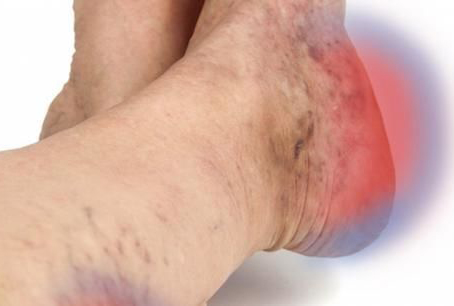Typically, when you are injured, the healing process starts to close the wound. And eventually, the wound heals. But, in the case of venous leg ulcers, it requires proper treatment as they take time to heal. They may also cause complications if left unattended.
To understand more about it, keep reading.
What are venous leg ulcers?
Venous leg ulcers are open sores on your leg caused by weak blood circulation in the limb. A chronic leg sore takes more than 2 weeks to heal. They usually develop above the ankle and on the inside of the leg. They can lead to serious health issues if not treated.
Usually, veins in the legs push blood back to the heart. But, when the veins do not push the blood back, blood pools. Over time, it causes an increase in pressure in the affected area to form an open sore.
Symptoms
Venous ulcers may cause an itchy or burning sensation in the affected area. The leg area around it may be swollen. Other signs & symptoms of venous ulcers include:
- Leg pain
- Shallow sore with a red base
- Surrounding skin may be shiny, tight, warm or hot and discolored
- If the sore becomes infected, it may have pus and a foul odor
An ulcer can become infected, and in such case, you may notice experience following symptoms:
- Pus
- Fever because of the infection
- Worsening of the pain
Causes
A venous leg ulcer is caused by high pressure in the veins of the lower leg. The high pressure may be caused by injury or circulation problems in your leg veins. As mentioned before, the veins in the leg contain valves that help prevents blood from flowing backward and upward to the heart. Weak or damaged valves causes the blood may flow backward and cause blood to pool in the veins. Pooling of the blood eventually leads to an increase in pressure. The building up of fluids inhibits tissues from getting oxygen and nutrients, which further causes cells to die, damage the tissues, and result in wound formation.
The following number of factors may put you at risk of developing a venous leg ulcer:
- Varicose veins
- Obesity
- Aging
- Deep vein thrombosis
- Smoking
- Previous leg injury
- Previous leg surgery
- Difficulty in walking
Prevention
Lifestyle changes can help to prevent venous leg ulcers. Stay alert and inspect your feet and legs every day for cracks and changes in skin color. Also, the following measures may help to improve blood flow and help the wound to heal:
- Compression stockings
- Managing blood pressure or cholesterol, or diabetes
- Eating healthy
- Quit smoking
- Avoid sitting for a longer duration
- Exercise
- Keeping legs elevated whenever possible
- Weight loss (if overweight)
Treatment
Venous ulcers are treated with
- Antibiotics
- Micronized Purified Flavonoid Fraction (MPFF)
- Compression with 2 and 4 layer bandage
- Endovenous Laser Treatment
- Foam Sclerotherapy

